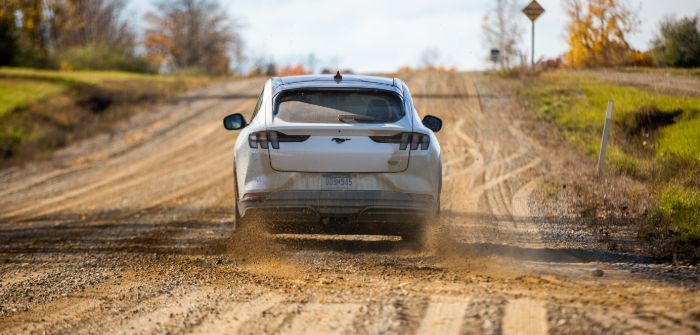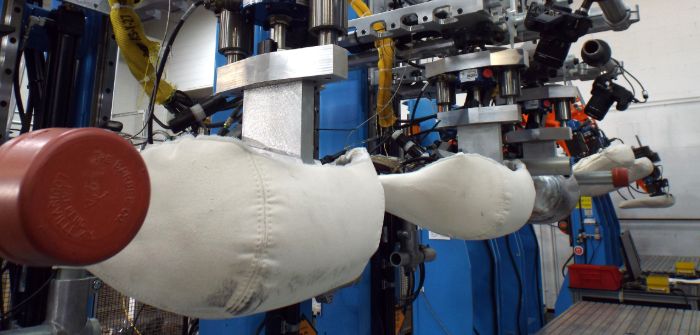Ford has provided details about the durability testing of its Mustang Mach-E, which included extreme car washes and sharp gravel roads, in an effort to show customers that EVs can endure the same handling as conventional cars.
“We have gone to great lengths to subject Mustang Mach-E to extreme tests – stressing it much more than a typical consumer would – to help ensure it is ready to face the rigors of the open road,” commented Donna Dickson, chief program engineer, Mustang Mach-E.
A study conducted by Ford revealed that around 13% of people living in Europe were unsure whether electric vehicles could be driven in the rain. To help overcome this perception, Ford subjected the Mach-E to 60 cycles in a sud-free automatic conveyor wash with powerful sprayers, brushes and dryers to mimic a vehicle wash every two weeks over a period of more than two years.
To test for leaks and to see if water could damage any exterior components, a high-pressure water spray was used to subject the Mach-E’s door frames, trim, cowling, badges, headlamps, tail lamps and adhesives to pressures of up to 1,700psi and temperatures of 60oC, from a distance of 0.3m.
The OEM’s engineers also programmed a robotic butt to simulate humans weighing different amounts getting in and out of the vehicle 25,0000 times. In addition, the ActiveX material with which the seats are upholstered was chemical and abrasion tested. The abrasion testing ensured that the material would resist cracking after being flexed 100,000 times, equivalent to a 10-year use cycle.
Other interior components such as the 15.5in touchscreen were also durability tested. “The screen in the Mustang Mach-E is so crucial to the driving experience. It’s the centerpiece of the interior and people’s eyes just naturally go right to it,” explained Dickson. “We knew we had to go above and beyond to make sure it is durable enough to withstand daily customer interactions — think purses and bags hitting it, pets bumping into it, children playing with it and so on. You need that deep customer understanding to identify the potential issues and work to prevent them.”
Even the paint of the Mustang Mach-E was tested, with Ford engineers and drivers traveling 483km on gravel roads, regularly sliding the vehicle to scatter gravel in an attempt to chip the paint. Upon completion of the first test, an even sharper type of stone was deployed and the test was repeated.
“Electric vehicles shouldn’t be limited to nicely paved city streets and suburbia,” concluded Dickson. “We tested Mustang Mach-E so that customers can confidently live on or adventure down gravel roads and not worry about their paint easily chipping.”



